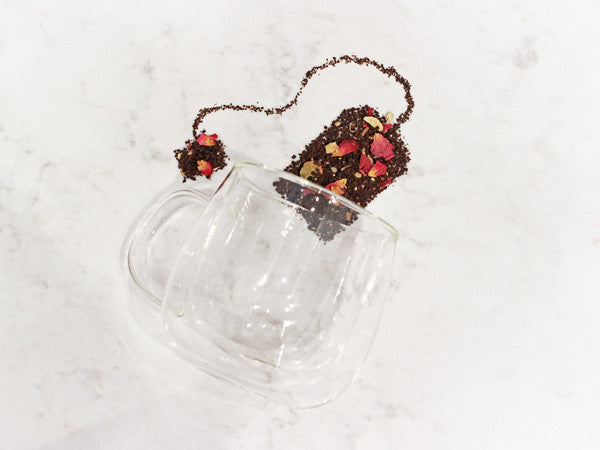If you're wondering how to make espresso without machine, you're not alone. Many coffee lovers crave the strong, rich flavor of espresso but don't want to invest in a pricey espresso machine. Fortunately, there’s a traditional and budget-friendly solution: the moka pot. This small but mighty stovetop brewer is a favorite in many households for its ability to produce bold, espresso-like coffee at home.
In this guide, you'll learn how to make stovetop espresso coffee at home easily with a moka pot from GROSCHE, discover how it compares to modern machines, and pick up tips on cleaning and maintenance for the best results.

What is a Stovetop Espresso Maker?
Stovetop espresso makers were first introduced in 1933 by Alfonso Bialetti in Italy. It is generally called an Italian coffee maker, or a Moka pot. It is a type of Italian percolator for making stovetop espresso coffee.
This is an easy to use stovetop coffee maker that makes a high quality stovetop espresso coffee. They are very popular around the world, especially in Europe and Latin America. That is because they make a very rich and tasty cup of coffee.
The highest quality stove-top espresso makers have Italian safety valves. These safety valves make sure the coffee percolator can withstand the high water pressure that develops during the brewing process.
Why Choose a Moka Pot? A Look at Stovetop Espresso Maker vs Espresso Machine
Before diving into the brewing process, it’s helpful to understand the difference between a stovetop espresso maker vs espresso machine.
-
Espresso Machine: These machines use high pressure to force hot water through finely ground coffee, producing true espresso with crema. They’re effective, but expensive and require regular maintenance.
-
Moka Pot (Stovetop Espresso Maker): Stovetop espresso makers were first introduced in 1933 by Alfonso Bialetti in Italy. It is generally called an Italian coffee maker, or a Moka pot. It is a type of Italian percolator for making stovetop espresso coffee.
This is an easy to use stovetop coffee maker that makes a high quality stovetop espresso coffee. They are very popular around the world, especially in Europe and Latin America. That is because they make a very rich and tasty cup of coffee.
The highest quality stove-top espresso makers have Italian safety valves. These safety valves make sure the coffee percolator can withstand the high water pressure that develops during the brewing process.
So, if you’re looking for a cost-effective and compact solution for how to make espresso without machine, a moka pot is a great starting point.

Interested in a premium stainless steel moka pot? Check out our MILANO Steel here.
How Do They Work?
A coffee percolator has three main parts. First, there is a bottom chamber for water. Secondly, a funnel to hold the coffee grinds. Finally, there is a top chamber that holds the coffee once it’s brewed.
How an Italian coffee maker works is easy. The boiling water from the bottom of the chamber makes steam. The steam reaches enough pressure to force the hot water up the funnel.
The hot water goes through the coffee grinds and into the top chamber. The steam brewing water gives a bold coffee flavour. This way an Italian stovetop coffee maker brews a thick and rich Moka coffee. Also commonly known as Italian espresso.



VIDEO: How to make stovetop espresso easily in a grosche milano
So are you ready to use an Italian Coffee maker to brew a stovetop espresso? Follow our quick step-by-step instructions on how to make espresso in a stovetop espresso maker.
Aluminum Stovetop espresso makers come in many shapes and sizes. They range from a single serve coffee maker to multiple cups to accommodate groups. The most common sizes are 3 cup, 6 cup and 9 cup.
But remember these are 3/6/9 “espresso cup” sizes, not 3 large cups or mugs of coffee! An “espresso cup” is also referred to as an espresso shot.
What is the actual liquid capacity of each size of moka espresso coffee maker? View our GROSCHE Milano stovetop espresso maker page for this and more information about moka pots.
How to Make Stovetop Espresso Coffee at Home Easily with a Moka Pot:
Step 1: Disassemble your Moka Pot Stovetop Espresso Coffee Maker
First, take apart your coffee percolator into its three pieces. They are the bottom boiler, the middle coffee funnel, and the top coffee chamber.
Next, check to make sure the silicone seal on the bottom of the coffee chamber is there and is kink free. It should be in good condition for a good seal.
Step 2: Add in Filtered Water
After that, pour filtered water into the bottom chamber. Fill it to just below the safety valve for a classic Italian style Moka coffee.
Safety tip! Don’t fill water above the safety valve. The safety valve is there to release pressure in case the pressure is too high. That can be due to any blockages.
The safety valve avoids a possible explosion of the pot from high pressure. Make sure the stovetop coffee maker you use has an Italian safety valve. Some coffee percolators use cheap valves that can lead to dangerous accidents while making coffee. Check out the MILANO if you’re interested in buying one.
Step 3: Add fine ground coffee in the filter funnel
You want a medium to fine grind size for stovetop espresso. Fill the filter funnel with the freshly ground coffee or espresso grinds. The grinds should be level with the top of the filter.
Slightly pat the grinds down but don’t compress the grounds in the funnel or the water will not flow through. Tamping the coffee should only be done in electric high pressure espresso makers.
Also, compressing the grinds can make excess pressure buildup in the boiler (bottom) water chamber. That can create a potentially unsafe situation.
Step 4: Re-assemble the espresso maker
After that, place your filter into the bottom chamber and screw the upper chamber to the bottom securely.
Step 5: Place on the stove top
Next, put your stovetop coffee maker on low to medium heat of your electric or gas stove. Make sure the handle is not in contact with the heat.
Step 6: Once coffee starts to brew, turn heat down to the lowest setting
Once you hear the coffee start to emerge from the filter funnel, turn down the heat and leave it to complete percolating.
Step 7: Coffee is ready!
When the ‘gurgling’ stops in your stovetop coffee maker and top chamber is full of espresso, your coffee is ready.

How to Clean Your Stovetop Espresso Maker for the Best Taste
Learning how to clean your stovetop espresso maker is just as important as knowing how to brew with it. Proper care extends the life of your moka pot and ensures consistently delicious coffee.
Cleaning Tips:
-
Let the pot cool completely before disassembling.
-
Rinse all parts with warm water—avoid soap, as it can leave a residue.
-
We don’t recommend putting it in the dishwasher to prevent any salt-like built up from occurring. Also, the aluminum will oxidize and turn black and tarnish, and look rusted too.
-
Remove old grounds from the filter basket after each use.
-
Dry all parts thoroughly to prevent oxidation, especially with aluminum models.
-
Replace the seals for your coffee percolator every 6 months!
By keeping your pot clean, you’ll preserve the flavor integrity and make the most out of your stovetop brewing experience.
Whether you're a beginner or a coffee enthusiast, mastering how to make espresso without a machine using a moka pot is a rewarding skill. It's affordable, easy to learn, and delivers a satisfyingly strong cup of coffee right from your kitchen.
Check out our different styles
Replace the seals for your coffee percolator every 6 months!
Once you know how to use a stovetop espresso maker, you have to know about the seals. When cleaning your pot, take a look at the rubber seal and gasket for any hard build up.
So if you find any build up or if the seal appears to be damaged, it’s time for replacements. Usually, the seals should be changed every 6 months. Also if you are a heavy user of the Moka pot you may need to replace them more often.
The gasket keeps the seal and safety of the pot, so it’s very important for it to be in good shape.
What are the sizes for Italian espresso maker seals and gaskets?
There are three common sizes to the espresso maker gaskets. The seals come in 3, 6, or 9 cup sizes and are mostly universal in their fit. You should carefully remove the seal in your espresso pot and measure it and compare to the chart below. Then you can select the right one to buy for your Moka pot gasket replacement.




Leave a comment
This site is protected by hCaptcha and the hCaptcha Privacy Policy and Terms of Service apply.